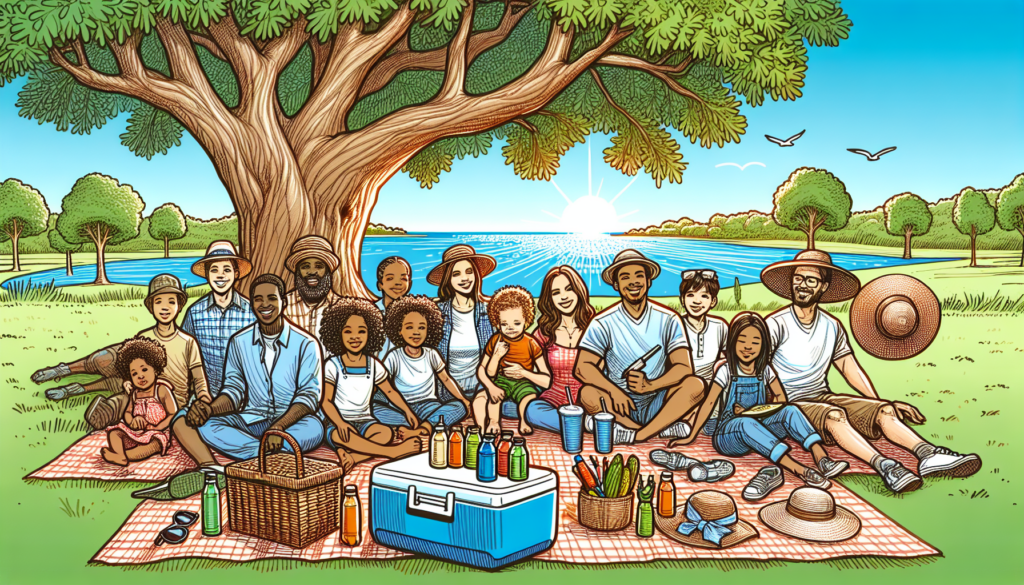
As the sun blazes down during the summer months, it’s essential to equip yourself with strategies to beat the heat and ensure your safety. With rising temperatures, it’s more important than ever to develop a “summer survival” plan that caters to both personal comfort and health. Here are some valuable tips to help you stay cool and safe all season long.
One of the most crucial aspects of summer survival is staying well-hydrated. During hot weather, your body loses water through sweat, which can lead to dehydration if not replenished. Always keep a water bottle with you and sip on it regularly, even if you’re not feeling thirsty. Infusing your water with slices of fruits like lemon, cucumber, or berries can make it more appealing and encourage regular consumption.
If you’re planning to be outdoors for a lengthy period, consider sports drinks that contain electrolytes to replace sodium and potassium lost through sweating. However, it’s wise to avoid excessive consumption of caffeinated or alcoholic beverages as these can further dehydrate your body.
Choosing the right clothing is another key element of summer survival. Light-colored, loose-fitting clothes made from natural fabrics such as cotton or linen allow your skin to breathe and help your body maintain a stable temperature. Wide-brimmed hats and sunglasses can protect your face and eyes from the intense sun, reducing the risk of heat exhaustion and sunburn.
When it comes to protecting your skin, sunscreen is non-negotiable. Use a broad-spectrum sunscreen with an SPF of at least 30 and apply it generously on all exposed skin, about 15 minutes before going outside. Reapply every two hours, or more frequently if you’re swimming or sweating. Sunscreen is vital to prevent sunburns and lower the risk of skin cancer.
Your home should be a sanctuary from the blistering heat. During peak sun hours, keep curtains or blinds closed to block out the sun’s rays. Utilize fans and air conditioning, but remember to maintain your devices to ensure they are working efficiently. In absence of air conditioning, strategically placing bowls of ice in front of fans can provide a refreshing breeze.
Consider investing in blackout curtains and thermal shades, which can keep your home cooler and reduce energy costs. Additionally, planting trees or shrubs outside your windows can provide shade and lower temperatures naturally.
If summer for you means being active outdoors, timing is everything. Plan strenuous activities such as jogging or gardening during the cooler parts of the day, such as early morning or late afternoon. Make sure to take frequent breaks in the shade and listen to your body’s signals; dizziness or exhaustion are signs to rest immediately.
For family outings, parks with plenty of shade or water bodies are perfect options. Remember that sectors like painting, carpentry, or delivery services often require outdoor work, so businesses should equip their employees with a “summer survival kit” that includes water, cooling towels, and portable fans.
Conducting activities with others is not only more enjoyable but also safer. Whether swimming or hiking, there’s safety in numbers if something unexpected occurs. Ensure everyone in your group knows the signs of heat exhaustion and heatstroke, which include heavy sweating, nausea, confusion, or fainting. Quick intervention by moving the person to a cooler area, offering water, and applying cold compresses can prevent serious health concerns.
Your summer survival plan should extend to your home garden and pets. Plants can suffer under intense heat. Water them either early in the morning or late in the evening to reduce water evaporation, and apply mulch to retain moisture. Keep an eye on your pets, too—they need plenty of fresh water and should avoid walking on hot asphalt surfaces that can burn their paws.
Technology can be your ally in the summer heat. Use apps that notify you of extreme weather alerts or pollen counts, and utilize weather tracking to plan your day. Smart home devices can help maintain comfortable temperatures without wasting energy. Additionally, UV index apps can guide you on how much protection you need when stepping outside.
In conclusion, summer survival is about strategic planning and embracing a few smart habits. By staying hydrated, protecting your skin, dressing wisely, and adapting your routines, you can enjoy all that summer offers without compromising your health. Whether you’re active outdoors or savoring downtime indoors, these tips can help you navigate the season safely and happily.